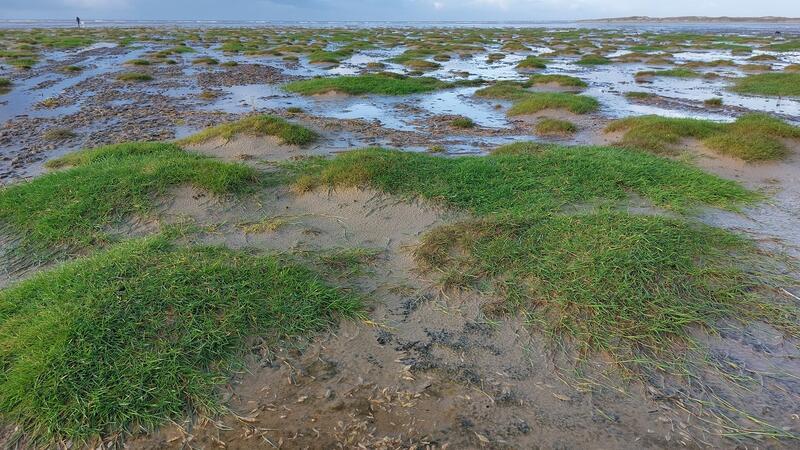Experts on salt marshes and dunes met on Fanø

Once per year, the members of the Expert Group Salt Marshes and Dunes (EG-SMD) meet to discuss the newest research conducted and management measures taken in relation to different habitats in the Wadden Sea. The aim is to exchange of information on important findings or successful local initiative that may be helpful for habitat management in other parts of the Wadden Sea. In October 2022, the meeting took place on Fanø, Denmark, the most northern inhabited island in the Wadden Sea.
Fanø provides an excellent opportunity to experience the natural dynamics of the Wadden Sea first hand. In contrast to many other Wadden Sea islands, the islands in the Danish part of the Wadden Sea are growing, resulting in new habitats being formed on a regular basis. On the North Sea side of the island this can be observed in the formation of embryonic dunes or green beaches, in the southern part the area of salt marshes is expending. During an excursion the experts visited both, a newly formed green beach in the northern part of the island and the salt marsh island Keldsand-Trinden in the south.
Green beaches may develop at the seaward side of dune ridges. With a mix of salt marsh and dune vegetation they form an interesting transition between the ecosystem beach, the dune system, and the salt marsh habitats. Thus, they have a large ecological value as they provide habitat for birds, insects, and the beach fauna, and they form the basis for the development of dunes and salt marshes. Since green beaches are not distinguished as landform in the Trilateral Monitoring and Assessment Programme (TMAP), they are merged with back-barrier salt marshes into one group. Of the 40,000 ha of salt marshes in the Wadden Sea World Heritage Site about one third are barrier-connected island salt marshes and only a small part of these can be considered green beaches. Through the secretion of sand in the vegetation, green beaches can quickly grow as illustrated by the new green beach on Fanø which had formed within only 3 months. Through further accumulation of sand, it may soon develop into embryonic dune, but the pioneer vegetation may also be destroyed by winter storms. This example illustrates how dynamic the Wadden Sea ecosystem can be.
During the visit to the beach the group was also made aware of the project ‘Ren Strand Fanø’ (Clean Beach Fanø), an initiative started in 2017 with the purpose of cleaning the beaches on the Danish island. Plastic bags and large garbage bins are provided at the entrance to the beaches to encourage tourist, and visiting habitat experts, to help picking litter and thus reducing the impact of marine debris on the Wadden Sea ecosystem.
